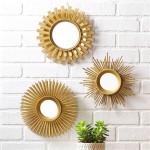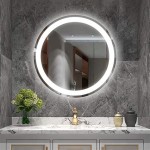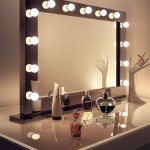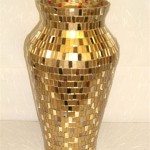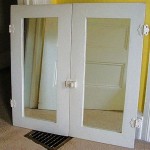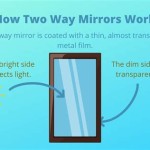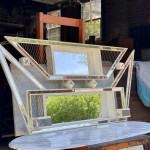Can You Glue Mosaic Tiles to a Mirror? A Comprehensive Guide
The application of mosaic tiles to a mirror surface is a common decorative technique used to enhance the aesthetic appeal of both functional and artistic pieces. Whether aiming to create a custom-designed mirror frame, embellish a vanity mirror, or craft a unique mosaic art piece using a mirror as the foundation, understanding the nuances of this process is crucial for a successful and lasting result. This article delves into the feasibility of adhering mosaic tiles to a mirror, exploring the appropriate adhesives, preparation techniques, application methods, and potential challenges involved.
The primary concern when bonding materials like mosaic tiles to a mirror is ensuring a strong, durable, and moisture-resistant bond that will not compromise the reflective surface or the overall structural integrity of the project. The smooth, non-porous nature of a mirror presents a significant challenge, as traditional adhesives may not adhere effectively or may react adversely with the mirror's backing. Careful consideration must be given to selecting the right adhesive and preparing the surface appropriately to mitigate these risks.
Choosing the Right Adhesive
The selection of an appropriate adhesive is paramount for ensuring the longevity and stability of mosaic tiles applied to a mirror. Several factors influence this choice, including the type of tile being used (glass, ceramic, stone, etc.), the size and weight of the tiles, the environmental conditions to which the mirror will be exposed (humidity, temperature fluctuations), and the desired flexibility of the bond. Several types of adhesives are suitable for this application, each possessing unique characteristics.
One popular option is a silicone-based adhesive. Silicone adhesives are prized for their flexibility, moisture resistance, and ability to bond to non-porous surfaces like glass. They are readily available, relatively easy to apply, and cure to form a durable, weatherproof seal. However, some silicone adhesives may contain acetic acid, which can corrode the silver backing of a mirror over time, resulting in discoloration or “silvering.” It is therefore essential to select a neutral-cure silicone adhesive specifically formulated for use with mirrors. These adhesives typically contain additives that prevent corrosion and ensure a safe and lasting bond.
Another suitable adhesive is epoxy resin. Epoxy resins offer exceptional strength and durability, making them ideal for applications requiring a particularly robust bond. They are also resistant to chemicals and moisture, ensuring that the mosaic tiles remain securely attached even in challenging environments. Epoxy resins typically come in two parts that must be mixed together before application, and they cure to form a rigid, waterproof bond. However, epoxy resins can be more challenging to work with than silicone adhesives, as they have a shorter working time and can be more difficult to clean up. Additionally, some epoxy resins may yellow over time, which could detract from the aesthetic appearance of the mosaic.
A third option is a specialized mosaic tile adhesive, often formulated with a modified acrylic polymer. These adhesives are specifically designed for bonding mosaic tiles to various substrates, including glass and mirrors. They offer good adhesion, flexibility, and water resistance, and are generally easier to work with than epoxy resins. Many of these adhesives are also non-toxic and low-VOC, making them a safer and more environmentally friendly choice. However, it is crucial to verify that the specific mosaic tile adhesive is compatible with mirrors and will not cause corrosion or damage to the silver backing.
Regardless of the adhesive chosen, it is imperative to read and follow the manufacturer's instructions carefully. Factors such as drying time, application thickness, and curing conditions can significantly affect the quality and longevity of the bond. It is also advisable to conduct a small test patch on an inconspicuous area of the mirror to ensure compatibility and adhesion before proceeding with the entire project.
Preparing the Mirror Surface
Proper surface preparation is crucial for ensuring optimal adhesion of mosaic tiles to a mirror. Even the best adhesive will fail if the mirror surface is not properly cleaned and prepared. The goal is to create a clean, slightly roughened surface that will provide a better mechanical bond for the adhesive.
The first step is to thoroughly clean the mirror surface using a glass cleaner or a solution of soap and water. Remove any dirt, dust, grease, or fingerprints that may be present. A clean surface promotes better adhesion and prevents contaminants from interfering with the bonding process. After cleaning, rinse the mirror with clean water and dry it thoroughly with a lint-free cloth.
Once the mirror is clean and dry, consider lightly abrading the surface to create a slightly roughened texture. This can be achieved using fine-grit sandpaper (220 grit or higher) or a scouring pad. Gently sand the area where the mosaic tiles will be applied, taking care not to scratch the reflective surface. The goal is not to remove the reflective coating, but rather to create microscopic imperfections that will improve the mechanical grip of the adhesive. After sanding, wipe the mirror clean with a damp cloth to remove any sanding dust, and then dry it thoroughly.
In some cases, it may be beneficial to apply a primer to the mirror surface before applying the adhesive. Primers are designed to improve adhesion and provide a more uniform surface for the adhesive to bond to. Choose a primer that is specifically formulated for use with glass or mirrors and that is compatible with the adhesive you have chosen. Apply the primer according to the manufacturer's instructions and allow it to dry completely before proceeding with the mosaic tile application.
For larger or more complex mosaic projects, it may be advisable to create a template or grid on the mirror surface to guide the placement of the tiles. This will ensure that the tiles are evenly spaced and aligned correctly. A template can be made from paper or cardboard and taped to the mirror surface. Alternatively, a grid can be drawn directly onto the mirror using a grease pencil or a water-soluble marker. Remember to use a level to ensure that the grid lines are straight and accurate.
Applying the Mosaic Tiles
With the adhesive selected and the mirror surface properly prepared, the application of mosaic tiles can begin. This process requires patience and precision to ensure a visually appealing and structurally sound mosaic design.
Start by applying a thin, even layer of adhesive to the back of each mosaic tile. Use a notched trowel or a small spatula to spread the adhesive evenly over the entire surface of the tile. The thickness of the adhesive layer will depend on the size and weight of the tiles, as well as the type of adhesive being used. Follow the manufacturer's instructions for the recommended adhesive thickness.
Carefully position each mosaic tile onto the prepared mirror surface, pressing it firmly into place. Ensure that the tile is aligned correctly and that the spacing between tiles is consistent. Use spacers or small pieces of cardboard to maintain uniform spacing between the tiles. If using a template or grid, follow the lines or marks to ensure accurate placement.
For larger mosaic projects, work in small sections to prevent the adhesive from drying out before all the tiles are in place. Apply the adhesive to a small area of the mirror, place the tiles, and then move on to the next section. This will ensure that the adhesive remains tacky and that the tiles adhere properly.
After all the tiles have been placed, allow the adhesive to cure completely according to the manufacturer's instructions. This may take several hours or even days, depending on the type of adhesive used. Avoid moving or disturbing the mirror during the curing process to prevent the tiles from shifting or dislodging.
Once the adhesive has fully cured, it is time to grout the mosaic tiles. Grout fills the spaces between the tiles, providing a waterproof seal and enhancing the overall appearance of the mosaic. Choose a grout that is appropriate for use with glass or mirrors and that complements the color of the tiles. Apply the grout according to the manufacturer's instructions, using a grout float to press the grout into the spaces between the tiles. Remove any excess grout with a damp sponge and allow the grout to cure completely.
Finally, clean the mirror surface with a glass cleaner to remove any remaining grout residue. Inspect the mosaic for any imperfections or loose tiles and make any necessary repairs. The finished mosaic should be a durable, aesthetically pleasing, and long-lasting addition to the mirror.

How To Mosaic Tile A Mirror Caffeine And Cabernet

How To Mosaic Tile A Mirror Caffeine And Cabernet

No Grout Mosaic Tile Mirror The Diy Village

How To Mosaic Tile A Mirror Caffeine And Cabernet

Diy Mosaic Tile Bathroom Mirror Centsational Style

How To Decorate A Mirror With Tile Sand And Sisal

How To Mosaic Tile A Mirror Caffeine And Cabernet

Diy Mosaic Tile Bathroom Mirror Centsational Style

Learn How To Make A Mosaic Mirror Beginners Project The

How To Make A Custom Tiled Mirror The Stonybrook House
